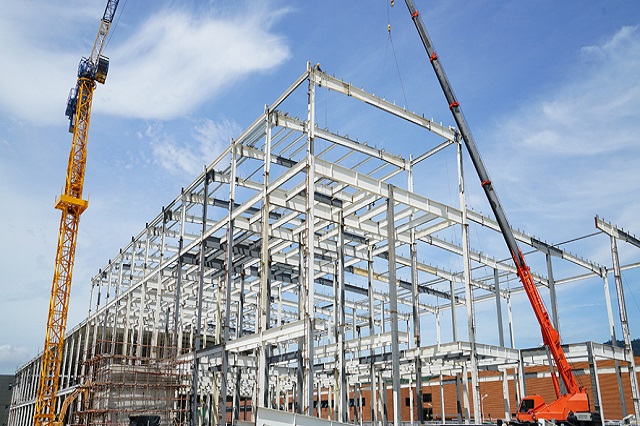When constructing industrial or commercial buildings, the choice between hot-rolled steel and pre-engineered buildings (PEB) often arises. Both methods offer distinct advantages and disadvantages, making it crucial to understand their nuances before making a decision. This article will delve into the key differences between hot-rolled and PEB construction, examining their benefits and drawbacks to help you select the most suitable option for your specific needs.
Hot-Rolled Steel Buildings
Hot-rolled steel buildings are constructed using steel members that are shaped into various profiles, such as I-beams, H-beams, and wide-flange beams, through a hot rolling process. These members are then fabricated and assembled on-site to form the building’s structural framework.
Advantages:
- Customization: Hot-rolled steel offers greater flexibility in design, allowing for more intricate architectural details and customizations to suit specific requirements.
- Durability: Hot-rolled steel is known for its strength and durability, making it well-suited for heavy-duty applications and harsh environments.
- Adaptability: Hot-rolled structures can be easily modified or expanded in the future, providing a degree of adaptability.
Disadvantages:
- Longer construction time: The on-site fabrication and assembly of hot-rolled steel structures can be time-consuming, extending the overall construction period.
- Higher labour costs: The fabrication and erection of hot-rolled steel structures often require skilled labour, which can increase labour costs.
- Potential for higher material waste: On-site fabrication can lead to material waste due to cutting and fitting processes.
Pre-Engineered Buildings (PEB)
PEB, also known as prefabricated metal buildings, are constructed using factory-fabricated components that are assembled on-site. These components, including structural members, wall panels, and roof panels, are designed and manufactured to specific dimensions and specifications.
Advantages:
- Faster construction: PEB components are pre-fabricated, significantly reducing on-site construction time and allowing for rapid completion.
- Lower costs: The standardization and efficiency of PEB construction often result in lower overall costs compared to traditional methods.
- Energy efficiency: PEB designs can incorporate energy-efficient features, such as insulation and advanced ventilation systems, to reduce operating costs.
- Quality control: Factory fabrication ensures consistent quality control and reduces the risk of errors during construction.
Disadvantages:
- Limited customization: PEB designs may offer less flexibility in terms of architectural customization compared to hot-rolled steel.
- Design constraints: The standardized nature of PEB components can sometimes limit design options, especially for complex or unusual building shapes.
- Site limitations: PEB components may require specific site conditions, such as adequate access for transportation and crane operations.
Factors to Consider
When choosing between hot-rolled steel and PEB, several factors should be considered:
- Project scope and complexity: For simple, standard buildings, PEB may be a more cost-effective and efficient option. However, for complex or highly customized structures, hot-rolled steel might be more suitable.
- Construction timeline: If a rapid construction schedule is essential, PEB can offer significant advantages.
- Budget: PEB often offers lower overall costs, but the specific pricing will depend on project requirements and market conditions.
- Design flexibility: If architectural customization is a priority, hot-rolled steel may provide more options.
- Site conditions: The accessibility and suitability of the construction site should be considered, as PEB may have specific requirements for transportation and assembly.
In conclusion, both hot-rolled steel and PEB have their respective merits and drawbacks. By carefully evaluating project requirements and considering factors such as construction time, cost, design flexibility, and site conditions, you can make an informed decision about the most appropriate construction method for your specific needs.


